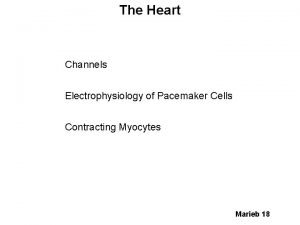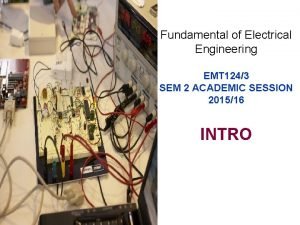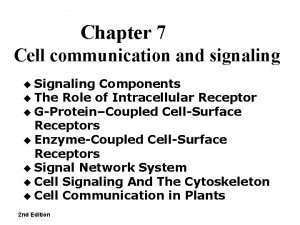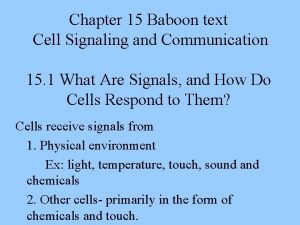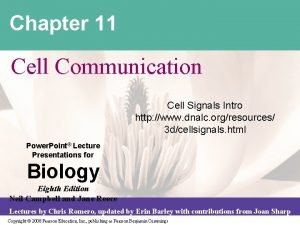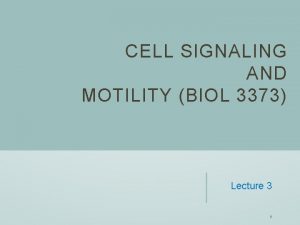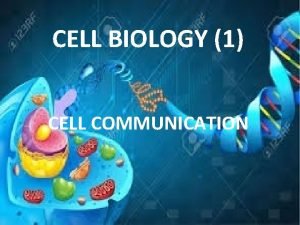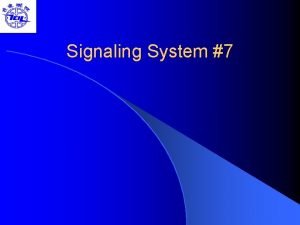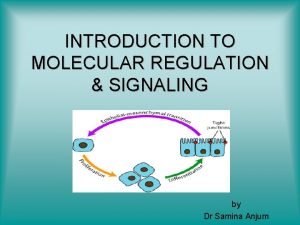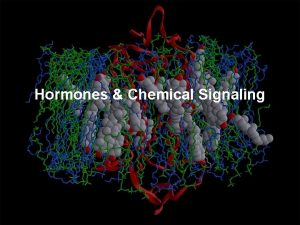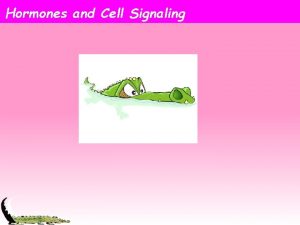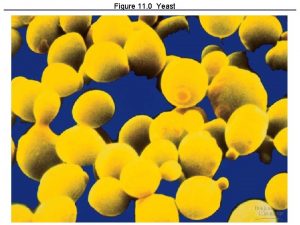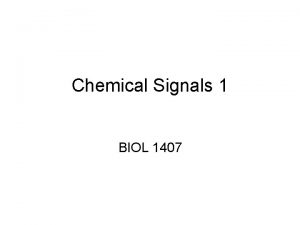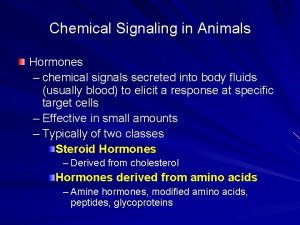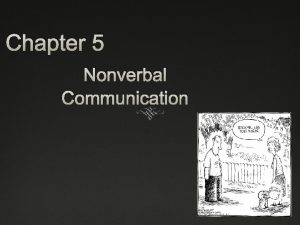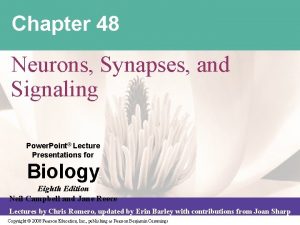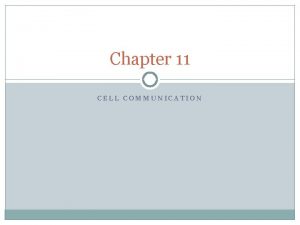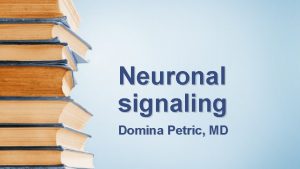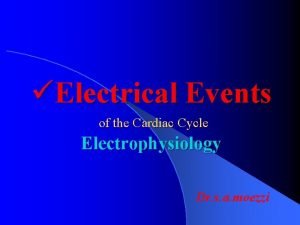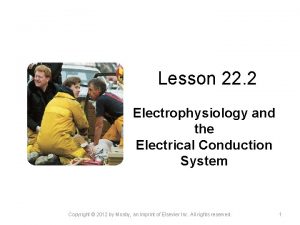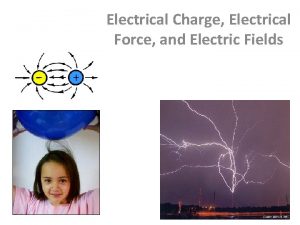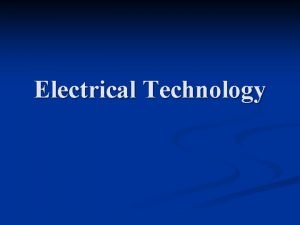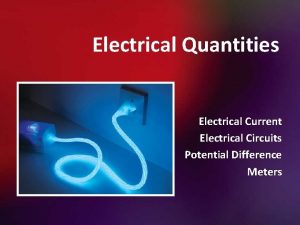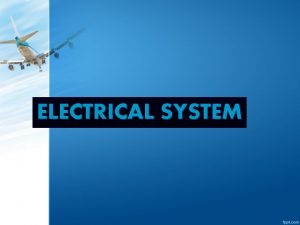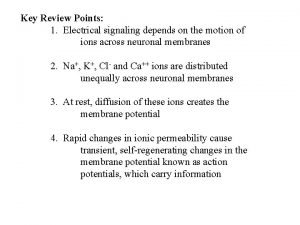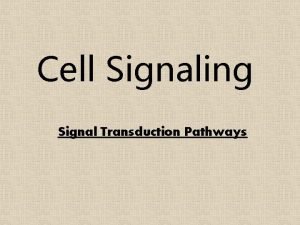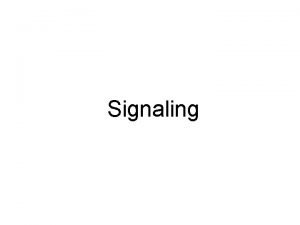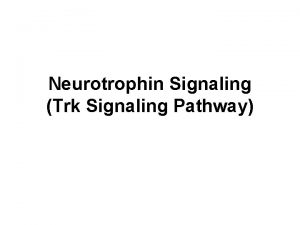Review of Electrophysiology Fundamental principles in electrical signaling






















- Slides: 22

Review of Electrophysiology: Fundamental principles in electrical signaling and synaptic transmission J. Josh Lawrence Why this review? 1) Reports of missed questions on USMLE Step 1. 2) Integrated Neuroscience is claiming “ownership” of this material – 2 lectures in MS 1 is not enough. 3) Provides an important conceptual foundation that will enable you to gain insight into disease and therapeutic mechanisms. Chapters 2, 3, 5, 8 Required text Associate Professor, Department of Pharmacology and Neuroscience

Chapters 2 -8 in Neuroscience 6 th Edition (Purves et al. ) Chapter 2* Lawrence Electrical Signals of Nerve Cells Chapter 3* Lawrence Voltage-Dependent Membrane Permeability Chapter 4 Blanton Ion Channels and Transporters Chapter 5* Lawrence Synaptic Transmission Chapter 6 Blanton Neurotransmitters and Their Receptors Chapter 7 (skipped) Molecular Signaling within Neurons Chapter 8* Lawrence Synaptic Plasticity *Two learning objectives/chapter

Chapters 2 -8 in Neuroscience 6 th Edition (Purves et al. ) Chapter 2 Lawrence Electrical Signals of Nerve Cells Learning Objectives: 1) Understand how ion movements produce electrical signals (p. 39 -45). resting membrane potential, passive electrical responses, hyperpolarization, depolarization, threshold, equilibrium potentials, electrochemical equilibrium, Nernst equation Starts with the Na+/K+ ATPase! Review Pablo Artigas’ lecture 2) Understand the ionic basis of action potentials (p. 46 -48). Goldman equation, resting membrane potential, action potential, Na+ permeability, K+ permeability, repolarization

Passive and active electrical signals in a neuron Passive responses are “Ohmic” Ohm’s Law V = IR V = voltage (or potential) I = current R = resistance Active responses are non-Ohmic; R depends on V resting potential, passive electrical responses, hyperpolarization, depolarization, threshold

How Ion Movements Produce Electrical Signals The Nernst potential for EK: EK = 58 log For a permeant ion with a 10: 1 ratio of [K+]in: [K+]out gradient, K+ ions flow down their concentration gradient, leaving behind intracellular negative charges, establishing an electrochemical equilibrium. [K+]in Nernst Equation (generalized form) K+ equilibrium potentials, electrochemical equilibrium, Nernst equation [K+]out [X]out RT ln EX = z. F [X]in R= T= z= F= gas constant temperature valence Faraday constant EX = equilibrium potential for ion X

The Ionic Basis of Action Potentials +67 m. V -84 m. V For K+ ions in mammalian neurons, [K+]out [5]out = 58 log EK = 58 log + = -84 m. V [140]in [K ]in For Na+ ions in mammalian neurons, [Na+]out [145]out 58 log ENa= 58 log = +67 m. V = [Na+]in [10]in The Na+/K+ ATPase establishes these gradients! Goldman Equation Vm = 58 log PK[K]out + PNa[Na]out PK[K]in + PNa[Na]in When PK>> PNa, Vm ≈ EK When PNa>> PK, Vm ≈ ENa (assuming PCl = 0) Goldman equation, Na+ permeability, K+ permeability, resting membrane potential, action potential, repolarization

Chapters 2 -8 in Neuroscience 6 th Edition (Purves et al. ) Chapter 3 Lawrence Voltage-Dependent Membrane Permeability Learning Objectives: 3) Understand how action potentials are generated through voltage-dependent membrane permeability (p. 48 -56). Ohm’s Law, membrane conductance, electrochemical driving force, rising phase, overshoot phase, undershoot 4) Understand long-distance signaling by means of action potentials (p. 57 -63). conduction velocity, myelination, nodes of Ranvier, saltatory conduction

Voltage-dependent membrane permeability Ohm’s Law Vm = Iion. Rion V = voltage I = current R = resistance g = conductance I= V R 1 IK = g. K (Vm - EK) EK = -84 m. V gion = R INa = g. Na (Vm - ENa) Iion = gion. Vm ENa = +67 m. V When Vm ≈ EK, Vm-ENa = -84 – 67 = -151 m. V At the resting membrane potential, there is a large driving force on Na+. When Vm = ENa, Vm-EK = 67 – (-84) = +151 m. V At the peak of the action potential , there is a large driving force on K+. Ohm’s Law, membrane conductance, electrochemical driving force

Voltage-dependent membrane permeability 2 1 3 4 IK = g. K (Vm - EK) INa = g. Na (Vm - ENa) 1 At resting Vm: g. K >> g. Na; Vm ≈ EK; (Vm - ENa) = large 2 During the rising phase: g. Na >> g. K; INa is large; Vm nears ENa 3 During the falling phase: Na+ channels inactivate (g. Na = 0); g. K >>> g. Na; (Vm - EK) = large 4 During the undershoot: g. K >>> g. Na; Vm ~ EK 4 back to 1 : g. K deactivates (Ch 4 Blanton)

Long-distance signaling by means of action potentials

Long-distance signaling by means of action potentials conduction velocity, myelination, nodes of Ranvier, saltatory conduction

Chapters 2 -8 in Neuroscience 6 th Edition (Purves et al. ) Chapter 5 Lawrence Synaptic Transmission Learning Objectives: 5) Understand fundamental mechanisms of synaptic transmission (p. 85 -102). presynaptic, postsynaptic, gap junctions, synaptic cleft, quantal release, calcium, synaptic vesicles, exocytosis 6) Understand postsynaptic membrane permeability changes during synaptic transmission (p. 102 -112). end plate current, reversal potential, postsynaptic currents, postsynaptic potentials, summation

Fundamental mechanisms of synaptic transmission presynaptic, postsynaptic, gap junctions, synaptic cleft, synaptic vesicles

Fundamental mechanisms of synaptic transmission calcium, exocytosis

Postsynaptic membrane permeability changes during synaptic transmission Katz end plate potential, miniature end plate potential, calcium, quantal release

Postsynaptic membrane permeability changes during synaptic transmission ACh receptors are permeable to both Na+ and K+, so: EK < EACh < ENa IACh = g. ACh (Vm - EACh) reversal potential, end plate current, postsynaptic potentials

Postsynaptic membrane permeability changes during synaptic transmission: summation E 1 E 2 EGlu = 0 m. V IAMPA = g. AMPA (Vm - EAMPA) INMDA = g. NMDA (Vm - ENMDA) I EGABA = -80 m. V IGABA = g. GABAA (Vm – EC l) postsynaptic potentials, summation

Chapters 2 -8 in Neuroscience 6 th Edition (Purves et al. ) Chapter 8 Lawrence Synaptic Plasticity Learning Objectives: 7) Describe forms of short-term synaptic plasticity (p. 169175). synaptic facilitation, synaptic depression, potentiation, augmentation, post-tetanic potentiation 8) Describe long-term synaptic plasticity (p. 176 -190). long-term potentiation, long-term depression, NMDA receptors, AMPA receptors

Synapses can perform activitydependent computations. Mechanism of facilitation/ augmentation/ post-tetanic potentiation: residual calcium Forms of short-term synaptic plasticity synaptic depression synaptic facilitation augmentation/depression Mechanism of depression: depletion of vesicles These synaptic mechanisms are not mutually exclusive – can occur at same synapse! augmentation post-tetanic potentiation synaptic facilitation, synaptic depression, potentiation, augmentation, post-tetanic potentiation

Long term synaptic plasticity: long-term potentiation (LTP)

Long term potentiation: mechanisms Initial phase: Induction Simultaneous depolarization of pre- and postsynaptic neurons during tetanus causes the unblock of Mg 2+, influx of calcium through NMDA receptors, and activation of Ca. MKII. Expression Increased AMPA receptor function/number at the synapse. Late Phase: Requires the synthesis of new proteins. CREB signaling and transcription of synapse growth proteins that stabilize and enhance dendritic spine growth. NMDA receptors, AMPA receptors

Long term synaptic plasticity: Long term depression (LTD) Induction Influx of calcium through NMDA receptors and activation of protein phosphatases. Expression NMDA receptors, AMPA receptors Reduced AMPA receptors at the synapse
 Electrophysiology
Electrophysiology Fundamental of electrical engineering
Fundamental of electrical engineering Whats a signal phrase
Whats a signal phrase Discourse analysis and vocabulary
Discourse analysis and vocabulary Register and signaling vocabulary
Register and signaling vocabulary What action is the ground guide signaling?
What action is the ground guide signaling? 3 types of cell signaling
3 types of cell signaling 3 types of cell signaling
3 types of cell signaling 3 stages of signal transduction pathway
3 stages of signal transduction pathway 3 stages of cell communication
3 stages of cell communication Ligand signaling molecule
Ligand signaling molecule Signaling system 7
Signaling system 7 Autocrine and juxtacrine signaling
Autocrine and juxtacrine signaling Juxtacrine communication
Juxtacrine communication Chemical signaling
Chemical signaling Exocrine cell signaling
Exocrine cell signaling Paracrine signaling
Paracrine signaling Chemical signaling
Chemical signaling Chemical signaling
Chemical signaling Fragmented industry
Fragmented industry Nonverbal communication substituting
Nonverbal communication substituting Chapter 48 neurons synapses and signaling
Chapter 48 neurons synapses and signaling Cell signaling
Cell signaling
